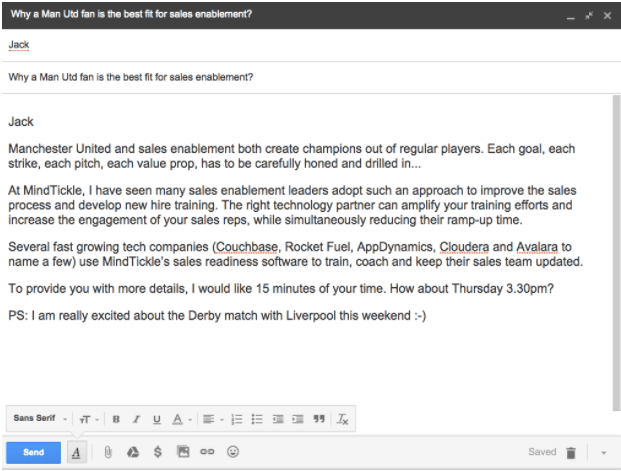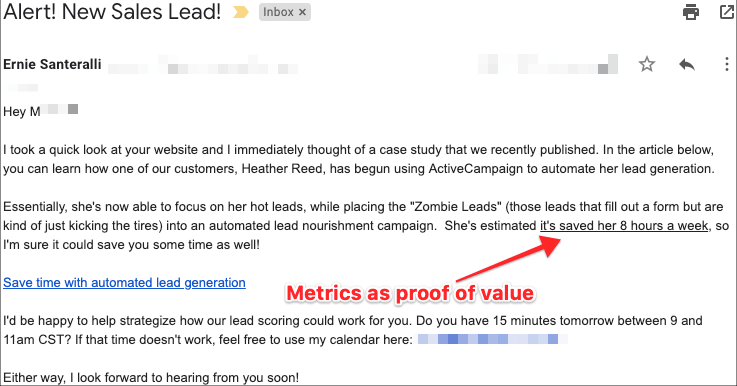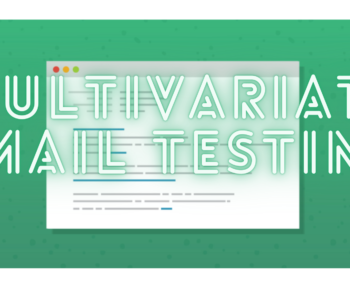To get a reply, a cold email should be short but powerful and interesting. For this reason, every part of this short message must have meaning and play an important communication role.
We often see things that determine whether a message has a high response rate. Check if you know these 6 most important steps to write working cold sales emails.
To get started, let’s take a look at what Cold Email is these days and how the process of writing Cold Email has changed over the years.
Table of Contents
What is a Cold Email?
“Cold email is the initial email sent to the receiver for benefit in terms of favor, sale, opportunity or any other dual purpose.”
In short, when sending an email to someone you don’t know for a specific reason it’s a cold email. In addition, Cold Email is not limited to sales, there are many examples of Cold Email that we can experience and see in our daily lives.
How do you write a Cold Email?
Step 1: Edit the “from” line
You may be surprised that editing the “from” line is shown as a separate step here. We usually set it up for a new email address and after that, we do not pay much attention to it.
However, the “from” line is as much a part of the cold email as the body, and because it plays an important role. It actually shows the recipients of the message sent by email. This is the part that influences their first impression. What happens next is that you decide whether to open the message and read it or throw it in the trash and forget about it.
Remember that those you know do not know yet
Since we are strangers to them, they may and maybe a little suspicious of our emails. The first thing they see when they see our email is the “from” line. We can earn their trust or scare them with the “from” line. If the first impression is not correct, they may delete our email without first opening it.
For this reason, it is a good idea to review what’s on your line before sending a new cold email campaign.
The “to” line is not set in stone. Can then be edited when needed. Whenever we send a new campaign, we can choose one of the possible variants to combine and match our “from” row form.
What are some possible variations of the “to” line?
There are at least 5 possible forms from the line.
A. First Name (Inam)
B. First Name + Last Name (Durrani)
C. First Name + Last Name, Title (Inam Durrani, Head of Marketing)
D. First Name + Company Name (Inam at mixwithmarketing.com)
E. First Name + Last Name + Company Name (Inam Durrani at mixwithmarketing.com)
The right “from” line for your Cold Outreach campaign depends on your message and your target group and the goal you want to achieve with your email, be it a marketing collaboration, an Influencer Outreach, or a potential sales agreement.
There are a few rules when it comes to reaching your goal and choosing the best “from” line that fits your email context, as well as a list of contacts who will receive your messages. Learn about CAN-SPAM
Rules to follow when editing the “from” line:

- Be consistent – don’t let it be removed from the rest of your emails in tone and style. If you use an unofficial tone throughout your email, you may want to include a first name + company name and you’re all ready.
- Consider Your Prospects Approach – If you were one of your possibilities, what would you like to see in your inbox? What is their average communication style? Try to emulate this when writing your “from” line.
- Find your own line that meets your future expectations – do not blindly follow any advice you find on the web. Think for yourself. People who are well aware of your opportunities and know what they want to see.
- Think about who your opportunities are most interested in talking to – be unique about it. Use that information to edit your “from” line.
It can give you more clarity on what to write.
Step 2: Write an interesting subject line
A cold email subject line can be seen as the key that opens the door to our message. Our opportunities make the first impression on us when we read the subject line. So we have to change it for the better.
The poorly written subject line is biased towards the recipient and our emails. They may decide not to open the email or, worse, be manually marked as spam causing problems with the email delivery.
Such situations can be avoided as long as we follow these rules:
- Consider the perspective of your prospect – think about what benefits your subject line gives to the prospect. What will they have after they open your email? Does it answer their needs or does it attract their curiosity? Do it about them rather than about yourself.
- Personalize it – Again, the subject line is not a place for self-promotion. On the contrary, you must prove here that you carefully planned to contact the addressee. You need to reassure them that you are not a spammer who sends countless similar emails to people and see what is complied with.
- Intrigue them – do not spread the beans yet. Choose their interest. Get their attention by making them reflect on the problem you have. Or try using a little flattery to get their attention.
- Sound Human – You are writing to a living and breathing human, so you should not be a boat. Avoid sounding ‘sales’ or too formal. Your subject line should be casual, friendly, and instinctive. Until you know how to achieve this, try to imagine that you are addressing a specific person you know, for example, your coworker.
- Connect it to the rest of the email – it will return to all previous points. What you enter in your subject line should connect to the rest of your message. By all means, do not fall for the clickbyte strategy in your subject line. You only get on the nerves of your chances.
What are some good examples of cold email subject lines?
Some of the best we’ve found in Mix With Marketing:

A more efficient way to do {FIRST_NAME} X
I have your X. The idea is to improve
Have you thought about switching to X?
Want to increase X in {company?
Step 3: Come up with a clever cold email introduction
When you persuade your addressee to open your message with the ‘from’ line and subject, you are halfway there. Now you have 3 seconds to catch their attention and read them beyond the first two lines. So we need an interesting introduction.
It’s hard to start a cold email. All we do is talk about ourselves and the company we work for. This may be because we do not know how to get started or we just want to close the sale with our first email. However, it also paves the way for emails to reach the trash.
Then how to write a cold email contact?
Cold email contact should not exceed 2-3 sentences. It does not introduce us or our company to the opportunity. Instead, the message refers to the recipient, their skill, achievements, work, and their company. In this way, we caught their attention.
A hint of flattery might be the way to go. But do not overdo it. Listing all of his recent activities is a long way off.
Not even a hunter. Do not search for information about their family. Be in the professional field.
You can even use those few sentences in a cold email contact to include where they ask about their issues. Or at best, you can talk about people you care about so you can take care of them.
Above all, consider contact as an opportunity to show your chances that they received the message because you chose to contact them for sure. You did your homework. You decided not to contact them right away. You did it on purpose.
Step 4: Propose some value on your pitch
Here comes the part where you say what you want from the message recipient, or in other words, the so-called pitch. also, learn about email phishing

So how do you write a good cold email pitch?
We know that the ready-made formula we use is a must when talking about the product/service we offer. It should be combined with benefits so that the potential buyer has a clear idea of what we are selling. However, this is not the best approach when we write cold emails.
Avoid the sales pitch
In sales emails, we have to be subtle with our pitch. We write this to close another sale. We write this to start a unique business relationship with a potential buyer. And it requires a personal approach.
When we write a standard pitch, the only type of response we create in the minds of our potential customers is “good for you.”
In other words, it leaves them cold. We found them. They don’t care. Why do they care about a stranger and their business? Learn about email autoresponder
Instead, try to keep your changes in the middle of your pitch. Give yourself as much value as possible. Find out what problems they are having and you can help them. Use the story to show them how you can get rid of them those problems. Prove to them that you are here to help and learn.
Talk about benefits, not features
Do not count product features. Stop writing about the value you offer. Highlight the benefits that may benefit your future. Remember to be specific. Too many vague benefits can weaken your message.
It can be difficult at first, but when you really put yourself in customer shoes, you feel it.
Another thing is that the pitch on the back of your email should be added smoothly. It should seem like a natural continuation of normal conversation. In any case, avoid forcible making and selling.
Step 5: End your cold email with a call-to-action
You are almost done. All you have to do is write a Call to Action (CTA), which will convince you of your chances of doing what you ultimately want to do with your cold email. It could be scheduling a Skype conversation, giving you feedback, replying to you, and so on. Anything you are willing to take care of. Any work you want to do with them in the end. Keep it simple and straightforward.
To ensure that your recipients take action, your CTA should:
- Inform the purpose of your email – CTA should explain the purpose of your email in one sentence. In other words, the addressee must clearly show what you want to do.
- Be concise and accurate – CTAs should not take more than one sentence. You should be as brief as possible. It should not even be vague.
Some demands that your prospect can make right now - Don’t ask too much – a simple request for action or a quick response can work better than an invitation to a 30-minute call. Start small. Even if you finally invite your prospects to a meeting, the first email they get from you is probably not the place to do so.
Step 6: Polish your cold email signature
And last but not least, a signature that is often and widely ignored. The signature is a complete part of our message and we cannot ignore it. This should let our addressee know who we are and where they can find more information about us and/or our company.

A well-crafted signature will help us reduce the volume of email and make the message clearer and more focused on the address.
Some tips to keep in mind when working on your mark:
- Make sure it makes you credible – with less information and no clue where to find yourself, the chances of getting your opinion are definitely lower.
- Include only essential information: Cut out information that not only takes up space but also
- brings in more value. Sometimes your phone number may be important, but other times it is completely unnecessary. Think about the use of each piece of information in the signature.
- Delete the useless ones in your email campaign.
Hope! You liked this content informative. don’t forget to share and leave comments. Thank you.






2 Comments